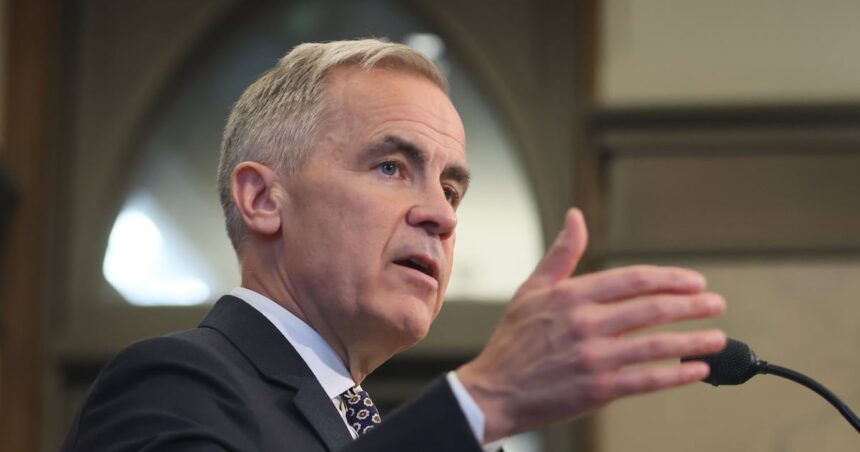When Finance Minister Chrystia Freeland announced the federal government’s plan to find $25 billion in savings over the next three years, the ripples were felt from Victoria to St. John’s. Standing at the podium last week, Freeland characterized the move as “responsible fiscal management,” but community leaders across the country are asking: at what cost?
“We’re looking at every line item with fresh eyes,” Freeland told reporters in Ottawa. “This isn’t about slashing essential services. It’s about ensuring taxpayer dollars deliver maximum value.”
But in Moncton, where federal employment supports nearly 6% of the local workforce, Mayor Dawn Arnold sees potential storm clouds. “When Ottawa tightens its belt, smaller communities often feel the squeeze first,” Arnold explained during our conversation at a local community center where federal youth employment programs operate. “These aren’t just budget numbers—they’re people’s livelihoods.”
The government’s fiscal belt-tightening comes after pandemic-era spending pushed the federal deficit to historic levels. According to Finance Canada’s projections, the national debt now stands at approximately $1.2 trillion, representing about 42% of GDP—up from 31% pre-pandemic.
Meanwhile, in Winnipeg’s North End, community health worker Jamie Sanderson worries about impacts on Indigenous health initiatives. “We finally got momentum on addressing health inequities,” Sanderson said, gesturing toward the newly renovated clinic where federal funding pays for addiction counselors. “Budget cuts have a way of hitting vulnerable communities hardest.”
The Treasury Board has already directed departments to identify “low-performing” and “non-essential” programs. Deputy ministers received memorandums last month requiring 5% savings proposals from their departments by September. Sources within multiple ministries confirm that program reviews are underway, with particular scrutiny on initiatives launched in the last five years.
Parliamentary Budget Officer Yves Giroux raised eyebrows when he characterized the $25 billion target as “a very surprising number” during committee testimony. “Finding efficiencies is one thing,” Giroux noted, “but cuts of this magnitude typically mean service reductions or staffing impacts.”
The Public Service Alliance of Canada estimates between 25,000 and 35,000 federal positions could be affected, though the government disputes these figures. “We’re focused on administrative efficiencies, not front-line services,” insisted Treasury Board President Anita Anand at a Toronto economic forum yesterday.
Opposition leaders were quick to respond. Conservative leader Pierre Poilievre called the cuts “too little, too late” during Question Period. “After eight years of fiscal mismanagement, they’re asking Canadians to pay the price,” Poilievre thundered across the House floor.
NDP leader Jagmeet Singh took a different approach. “If we’re serious about fiscal responsibility, let’s talk about closing tax loopholes for the ultra-wealthy before cutting services regular Canadians depend on,” Singh told supporters at a rally in Vancouver.
For economists, the debate centers on timing. “Fiscal restraint makes sense in principle,” explained Armine Yalnizyan, economist and Atkinson Fellow on the Future of Workers. “But with housing affordability at crisis levels and healthcare systems under strain, the question becomes whether this is the right moment for austerity.”
In Calgary, where federal infrastructure funding has supported crucial flood mitigation projects, Mayor Jyoti Gondek expressed cautious optimism. “We understand fiscal constraints, but climate resilience isn’t optional,” she noted during a tour of the Bow River flood protection system. “These investments save money in the long run.”
The timing has also raised political eyebrows. With a federal election due within 18 months, some see the budget-cutting exercise as an attempt to neutralize Conservative attacks on government spending before the campaign heats up.
Recent Abacus Data polling shows government spending ranks third among voter concerns, behind housing affordability and healthcare access. Among swing voters, however, government debt worries have increased 12 percentage points since January.
Back in Ottawa, the halls of government buildings buzz with uncertainty. “Everyone’s waiting for the other shoe to drop,” confided a mid-level manager at Environment Canada who requested anonymity. “Programs we thought were priorities six months ago are suddenly being reevaluated.”
For communities like Thunder Bay, where federal regional development funding has supported economic diversification efforts, the stakes couldn’t be higher. “Northern communities need predictable federal partnership,” insisted Chamber of Commerce president Charla Robinson. “We’re finally seeing results from investments made five years ago.”
As the fall budget update approaches, Canadians await details on where the fiscal axe will fall. Finance officials promise transparent decision-making, but history suggests the full impact of such cuts often emerges gradually, felt first in communities already struggling with limited resources.
Whatever path the government chooses, one thing remains clear: finding $25 billion without affecting services Canadians count on will require more than accounting creativity—it will test the government’s ability to balance fiscal responsibility with the everyday needs of communities from coast to coast to coast.






